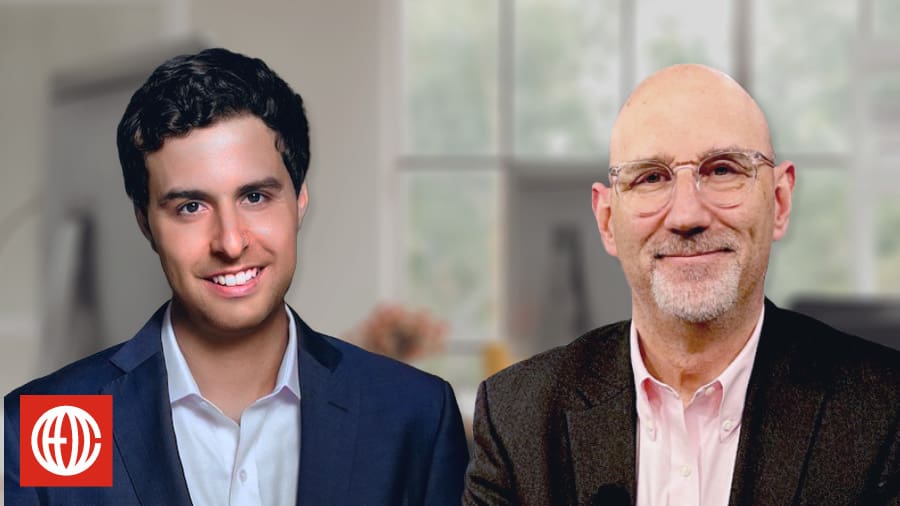
Guest: Ahmed Hassan, a coach at CEO Coaching International with 30-plus years of global expertise in operations, strategy, leadership, and business development.
Quick Background: Saving a failing business is never just about driving up profit. A successful turnaround starts with recalibrating the company’s accountability and its belief in Making BIG Happen together.
On today’s show, Ahmed Hassan discusses the three-step process he used to rescue distressed businesses all over the world, as well as a major personal challenge that forced him to redefine what success means in business and in life.
Keys to a Successful Turnaround from Ahmed Hassan
1. Ask the right questions.
Struggling companies often fail to ask and answer a very simple question: “Why?” They can see the numbers on their P&L statements trending in the wrong direction, but they settle for superficial — and often external — explanations. Unfortunately, inflation and interest rates probably aren’t the reasons a business is struggling — they’re just exposing problems that leadership has been overlooking or ignoring.
“The P&L tells you everything,” Ahmed says. “You dissect the P&L. Sales will tell you if you’re discounting too much, will tell you about volume, which will tell you how well you’re doing in each channel. Then, dig into the margin. Margin is what pays for everything. Why is the overhead cost in the factory so high? What are the variable expenses, fixed expenses? What are we paying for X, Y, Z? The point is to be as specific as possible on where you’re seeing issues.”
At one of his most challenging turnaround situations, Ahmed walked into a business that had been declining for 10 consecutive years. It was clear to him that the company’s issues ran far deeper than just their numbers. So he asked some pointed questions about the people as well.
“Walking around the building, there was just a lack of energy,” Ahmed remembers. “Seeing that lack of energy really focused me on the morale of the company. Are people motivated? Are they not motivated? What’s driving them? What’s not driving them?”
2. Identify pillars of growth.
“Once we get our hands around some of these answers and we’ve done the deep dive, we need to come up with 3 to 4 things that are going to drive results,” Ahmed says. “At some companies I worked at, we could have done 15 things. But we want to keep it focused. We want to keep it crisp. And most importantly, we want to keep it achievable.”
Start with your people. When CEO Coaching International founder Mark Moses was leading a struggling company through a rough patch, he rode into the annual meeting on an elephant. Mark wanted his team to start thinking BIG again. And the next day, the miniature elephants that Mark saw all over the office told him that the message was received and his team was ready to march forward.
At one of Ahmed’s companies, a lack of discipline and accountability were dragging down morale and productivity. So Ahmed started arriving with the first-shift factory workers at the gate to set standards that the rest of the workforce rose to meet.
Once you’ve rallied the troops, circle back to your P&L statement and zero in on the KPIs that are most critical to your success. Reexamine the Huge, Outrageous Targets you set at your annual planning session. Concentrate on the 3 to 4 actionable, measurable activities that will start moving your company closer to your BIG goals every day.
3. Establish accountability.
It’s essential that workers at every level of the company understand who is in charge of achieving what by when. But the most effective accountability systems include crucial elements of empowerment that the “bull in a china shop” CEO might charge right past.
“If one sits at the head of an organization, you can’t always command and demand,” Ahmed cautions. “For people to manifest this vision and get those initiatives done, as a leader, you have to provide resources: money, time, facilities. I see a lot of this being a one-way street: ‘I’m the leader, I’m the boss, and you guys need to do what I’m talking about.’ It doesn’t really work that way. So if one is smart enough to get everybody bought into the vision, then you really need to have that two-way dynamic of, ‘This is what you’re going to do, but this is what I’m going to do as the leader to help you make this vision come to life.’ It’s a give-and-get relationship. That’s our role as leaders: to empower people and to provide them the facilities to be able to do what’s needed.”
At a company that’s trying to reaccelerate through a crisis, the quality of that “give-and-get” and the need for swift action create a unique sense of urgency. Ahmed says that “the annual becomes daily,” meaning CEOs and their leadership teams may need to accelerate their meeting rhythms to review KPIs more granularly. But he has also found that the more purpose employees feel, the more likely they are to take ownership over their responsibilities, explore creative solutions to company-wide problems, and help the CEO Make BIG Happen.
It’s a lesson that Ahmed learned in the toughest way imaginable: after a severe car crash, he suffered nerve damage and lost the ability to control his left forearm and hand. As he “remapped” his mind to learn how to live with his injury, Ahmed says he gained a new perspective on the importance of purpose and a leader’s responsibility to help people achieve more.
“I think people need purpose,” Ahmed says. “People want purpose. When you’re doing the assessing, aligning on the goals, you are giving people a vision of the future. And then you ask the question, ‘Wouldn’t you want to be a part of that versus where we are today?’ The answer 9 times out of 10 is, ‘Of course, I would like to be part of something great and growing and wonderful and meaningful and purposeful.’ You can get buy-in within a very, very short amount of time by showing them what the future is going to look like. It’s that engagement process, and then finding the small victories. Even if the victory is an idea, it’s very, very powerful.”
Top Takeaways
1. Ask better questions and you’ll arrive at more specific, actionable answers that will improve your business.
2. Narrow your focus to the 3 to 4 KPIs and activities that are most crucial to getting the company back on track.
3. Give your people purpose and they will give your company a culture of accountability.
About CEO Coaching International
CEO Coaching International works with CEOs and their leadership teams to achieve extraordinary results quarter after quarter, year after year. Known globally for its success in coaching growth-focused entrepreneurs to meaningful exits, the firm has coached more than 1,500+ CEOs and entrepreneurs across 100+ industries and 60 countries. Its coaches—former CEOs, presidents, and executives—have led businesses ranging from startups to over $10 billion, driving double-digit sales and profit growth, many culminating in eight, nine, or ten-figure exits.
Companies that have worked with CEO Coaching International for two years or more have achieved an average revenue CAGR of 25.9%, nearly 3X the U.S. average, and an average EBITDA CAGR of 39.2%, more than 4X the national benchmark.
Discover how coaching can transform your leadership journey at ceocoachinginternational.com.
Learn more about executive coaching | Meet our world-class coaches







